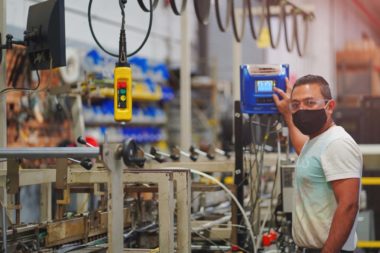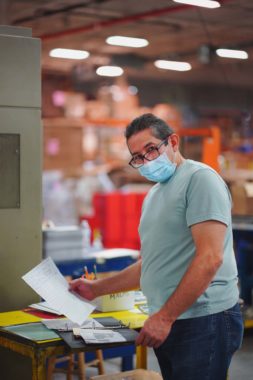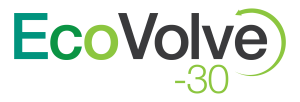“Perfection is not attainable. But if we chase perfection, we can catch excellence.”—Vince Lombardi, football coach and leader.
At Rohrer, quality is more than a goal, it’s a journey. We are in an ongoing evolution of improving quality – day after day, year after year. It never stops. For Rohrer, continuous improvement means that we never see today’s success as our final achievement, because that assumes everything remains the same. But in the real business world, we know that change fuels everything – from how we compete and communicate to what we sell. And the quality of what we sell, must not suffer because of change, but only get better. That’s the bottom line of how we define quality at Rohrer. To keep our journey on course, Rohrer has implemented two globally recognized quality systems in our manufacturing facilities; Lean Manufacturing and ISO 9001. And that’s just the beginning. Many of Rohrer’s eight manufacturing facilities have gone above and beyond to develop their own unique quality initiatives for exceeding customer expectations.
What’s the Skinny on Lean Manufacturing?
In the U.S., quality in manufacturing hasn’t always had a front seat in terms of priority. It was quantity over quality in the post WWII era. Production was focused on the ever-increasing demand for goods here at home. And global markets? This was when “made in Japan” meant shoddy, low quality products from sub-standard manufacturing practices. But that changed. Ironically, it was Japan where new production standards known as “Lean Manufacturing” were developed at Toyota. By reducing waste and boosting efficiency, this process enabled them to produce higher-quality exports at lower prices. Western automakers, as well as quality experts worldwide took notice as Toyota became a formidable competitor.
 Besides improved efficiency and waste reduction, Lean’s strategies include ongoing efforts for process improvement and innovation. Japanese manufacturers translated these guiding principles into everyday work habits called the “5 S’s”.
Besides improved efficiency and waste reduction, Lean’s strategies include ongoing efforts for process improvement and innovation. Japanese manufacturers translated these guiding principles into everyday work habits called the “5 S’s”.
- Sort: Separate needed tools, parts, and instructions from unneeded materials.
- Set in order: Organize whatever remains by labeling parts and tools for ease of use.
- Shine: Create a cleanup campaign for ongoing cleaning of work areas.
- Standardize: Schedule regular cleaning and maintenance by conducting sort, set in order and shine daily.
- Sustain: Make the first four S’s part of a daily routine.
Today, if you were to tour any of the Rohrer locations, you would see posters prominently displaying the “5 S’s”. That tells you that every employee has been trained and puts those principles to work every day.
Validated World-Class Quality – ISO 9001
ISO, or the International Organization for Standardization, is “the world’s largest developer of voluntary International Standards.” International standards give world-class specifications for products, services and systems to ensure quality, safety and efficiency. These standards are critical for facilitating global and domestic trade guided by Seven Quality Principles:
- Customer Focus: Managing and measuring customer satisfaction.
- Leadership: Creating a dynamic work environment where quality management can flourish.
- Engagement of People: Training is mandated to ensure employees have the tools they need to do their job.
- Process Approach: A positive outcome is the result of efficiently managing activities and resources.
- Improvement: Continual improvement should be a permanent objective.
- Evidence-based Decision-making: Effective decisions are based on the analysis of data and information.
- Relationship Management: Select suppliers/consultants that can manage costs, optimize resources and create value.
Out of more than 21,000 international standards covering almost every industry, ISO 9001 is the most common and also the only one that can be certified. By comparison, Lean Manufacturing has no certification process. Achieving ISO 9001 takes an enormous amount of commitment to not only bring quality processes up to ISO standards, but to also document them fully. The final step is an onsite visit from an ISO audit team before certification can be awarded. To maintain certification, periodic audits are also performed to ensure compliance continuity. To date, seven out of nine Rohrer plants have achieved ISO 9001 certification, with one currently in development. Whether certified or not, each location operates under ISO 9001 quality standards.
From a customer perspective, they can be assured that Rohrer’s products meet the highest standards of quality, because they adhere to the most recognized and respected world-class manufacturing standards and guidelines. Many of our customers tour and audit our facilities, and they see first-hand how those standards are put to work every day. But what they may not see is the comprehensive documentation that validates every work instruction, quality check, safety and training initiative within a facility. It is said that if you can measure quality, you can manage it, and ISO’s stringent documentation compliance is a perfect example.
The Big Quality Picture
 Each Rohrer location has its own dedicated Quality Manager tasked with overseeing the adherence and advancement of quality protocols. They receive guidance and assistance from Rohrer’s Corporate Quality and Compliance Manager, Tim Ryan, who is responsible for monitoring and standardizing quality and safety standards across all facilities.
Each Rohrer location has its own dedicated Quality Manager tasked with overseeing the adherence and advancement of quality protocols. They receive guidance and assistance from Rohrer’s Corporate Quality and Compliance Manager, Tim Ryan, who is responsible for monitoring and standardizing quality and safety standards across all facilities.
From a big picture perspective, Rohrer has implemented quality initiatives enterprise-wide in the following areas:
- Communication – Rohrer’s Corporate Quality and Compliance Manager leads a weekly meeting with all nine of the Quality Managers. The primary focus is resolving customer complaints while providing an open forum for quality-centric topics including audit updates, customer visits, best practices, safety prevention and data reporting.
“If you can measure quality you can manage it,” is one of the keys to Rohrer’s success. That’s why Tim Ryan initiated a centralized network known as Intelex to track and manage customer complaints and corrective actions. This system connects all of the facilities for the purpose of sharing actionable data and metrics. Intelex is also gearing up for a unified document control feature to help codify and standardize all processes. Although centrally managed by corporate, each plant will have access to both corporate and facility-specific documents. Intelex also provides actionable data to help shape Key Performance Metrics (KPIs). This information can be shared with leadership to make informed decisions as well as with employees to help gauge their productivity.
- State-of-the-art equipment – With heavy investment in new equipment, Rohrer can now increase efficiency, accuracy and color consistency. Recent additions include two of the very latest Heidelberg lithographic printing presses that can do the work of seven old presses. New die-cutting equipment allows precision, with zero variance from sheet to sheet.
- Measurement and testing – Data generated from Intelex is used up and down the Rohrer organization chart to advance initiatives, track trends, monitor safety/environmental issues and report productivity performance. In the near future, Rohrer will be able to capture critical color data from the presses and use that as a measurement tool in the form of a customer quality report. Our customers now have technical support resources to help solve their issues along with the on-call expertise of Rohrer staff – all performed without an on-site visit.
- Continuous improvement – Internal audits not only measure quality efforts, but they also provide a wide-angle view of continuous improvement. By following Lean Manufacturing principles and ISO 9001 standards, Rohrer is committed to applying continuous improvement into every process, training, documentation and new equipment/technology it employs.
- Workflow/process enhancements – An example of a recent process improvement can be found in the Wadsworth facility. They were able to double their output by strategizing their workflow – from receiving raw materials, through production to shipping. This involved a new quality checkpoint when raw materials are received, a system where workers receive the correct materials and tools when and where needed, a reconfiguration of equipment for a more efficient workflow, added storage space and a final packing check before shipping. Other plants are adopting these new workflow enhancements at their own locations. In addition, all facilities conduct hourly quality checks during production runs to ensure quality adherence from start to finish.
- Customer satisfaction – Rohrer’s ongoing quality evolution is for one reason, customer satisfaction. As Tim Ryan points out, a customer complaint is an opportunity for improvement. That’s why the Intelex system which tracks customer complaints and corrective actions has been an invaluable tool towards making improvements – every day. Moreover, Rohrer’s ezCombo® program brings together the best of customer satisfaction and quality principles. ezCombo® is Rohrer’s unique design and manufacturing process that allows the production of multiple parts on the same production run. This shared tooling arrangement increases speed and reduces start-up costs and set-up times for all customers.
In the next post, Rohrer will elaborate on the quality programs across all of our facilities. Stay Tuned!
To learn more about packaging and stay up-to-date with Rohrer, please subscribe to our blog below!



